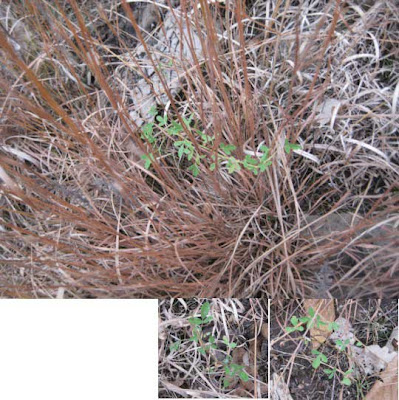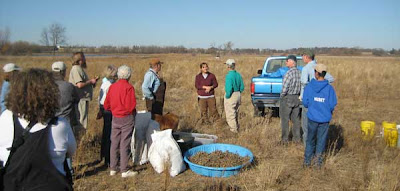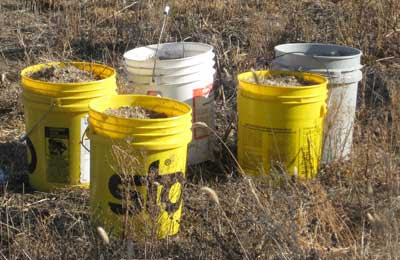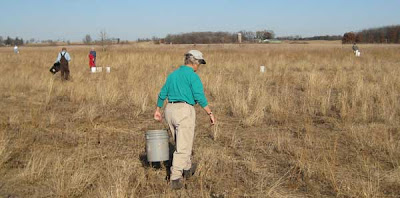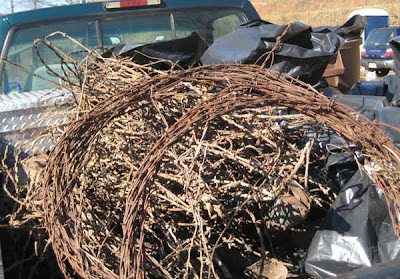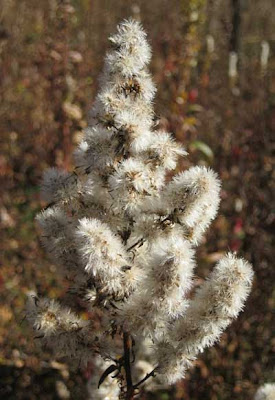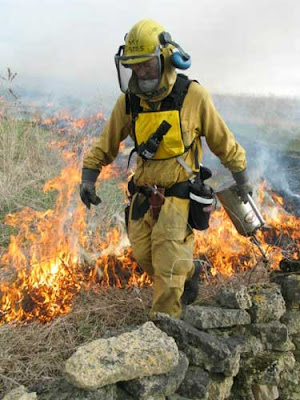Making a new boardwalk

It is not finished yet, but we have a good start on the boardwalk, which will go across our marsh to Pleasant Valley Creek. This project has been designed and directed by Jim Hess, with advice from Paul Michler, Kathie Brock, and others. Before the winter is out, and perhaps a lot sooner, we will be able to walk from the edge of the Crane Prairie, across the small free-flowing creek that is fed by our many springs, and reach Pleasant Valley Creek. This boardwalk is being built so that we can manage and restore our wetland, but it will also enable visitors to get out into the middle of the sedge meadow/cattail marsh.
The bridge across the creeklet near the Crane Prairie has been fabricated by Wickcraft, Inc. of Madison, and they generously provided free installation plus the wood for the bridge walkway. The rest of the boardwalk, around 200 feet, is being funded by Savanna Oak Foundation, Inc. The walkway is being laid upon 5 foot sections of used telephone poles that were donated by Madison Gas & Electric Company. We are grateful to all these entities for making this boardwalk possible.
The bridge was installed by Wickcraft in early November, and we made use of yesterday's fine weather to construct the first sections of the boardwalk itself. These were intended as a pilot project, to work out the "bugs" and confirm that Jim's design was satisfactory. Yes, it was!
The walkway is being fabricated in 10 foot self-contained sections which are then brought to the site and fastened to the 5 foot telephone poles, which are being laid down across the marsh. Each section is being fastened to the next by spacer boards that are bolted in place. When completed, the walkway on each side of the bridge will consist of a single long unit.
 The photo at the top shows our construction crew working in the barn. Kathie and Rex sawed the deck boards to size, Marci and Susan arranged the boards in place and drilled the pilot holes for the self-threading screws, and Jim and Paul screwed the deck boards into place. The holes for the spacer boards were drilled and two 10-foot sections were bolted together to make sure the design would work. Then the two sections were taken apart for transportation to the site.
The photo at the top shows our construction crew working in the barn. Kathie and Rex sawed the deck boards to size, Marci and Susan arranged the boards in place and drilled the pilot holes for the self-threading screws, and Jim and Paul screwed the deck boards into place. The holes for the spacer boards were drilled and two 10-foot sections were bolted together to make sure the design would work. Then the two sections were taken apart for transportation to the site.To reach the site, we are driving along the fire break that separates the Crane Prairie from the wetland. Although the fire break is getting enlarged by the delivery truck, no harm is being done because the prairie plants have all senesced. The Prairie should bounce back next spring, after it has been burned.
At the site, the 5 ft telephone poles are spaced 10 feet apart and the walkway units placed on top. Two people can carry the 10-foot section, one on each end, although to reduce the load, 4 people were used. We now have two sections, the prototype, in place.
Even with only two sections and the bridge in place, one already has access to Pleasant Valley Creek, because at this time of year the cattail marsh is not very wet (although I used rubber boots).
Now that the prototype has been proved, we hope to be able to complete the boardwalk within the next month. Once it is completed, we will be able to start thinking about some restoration work. Already, I have discovered several large honeysuckle bushes that must be cut down!



